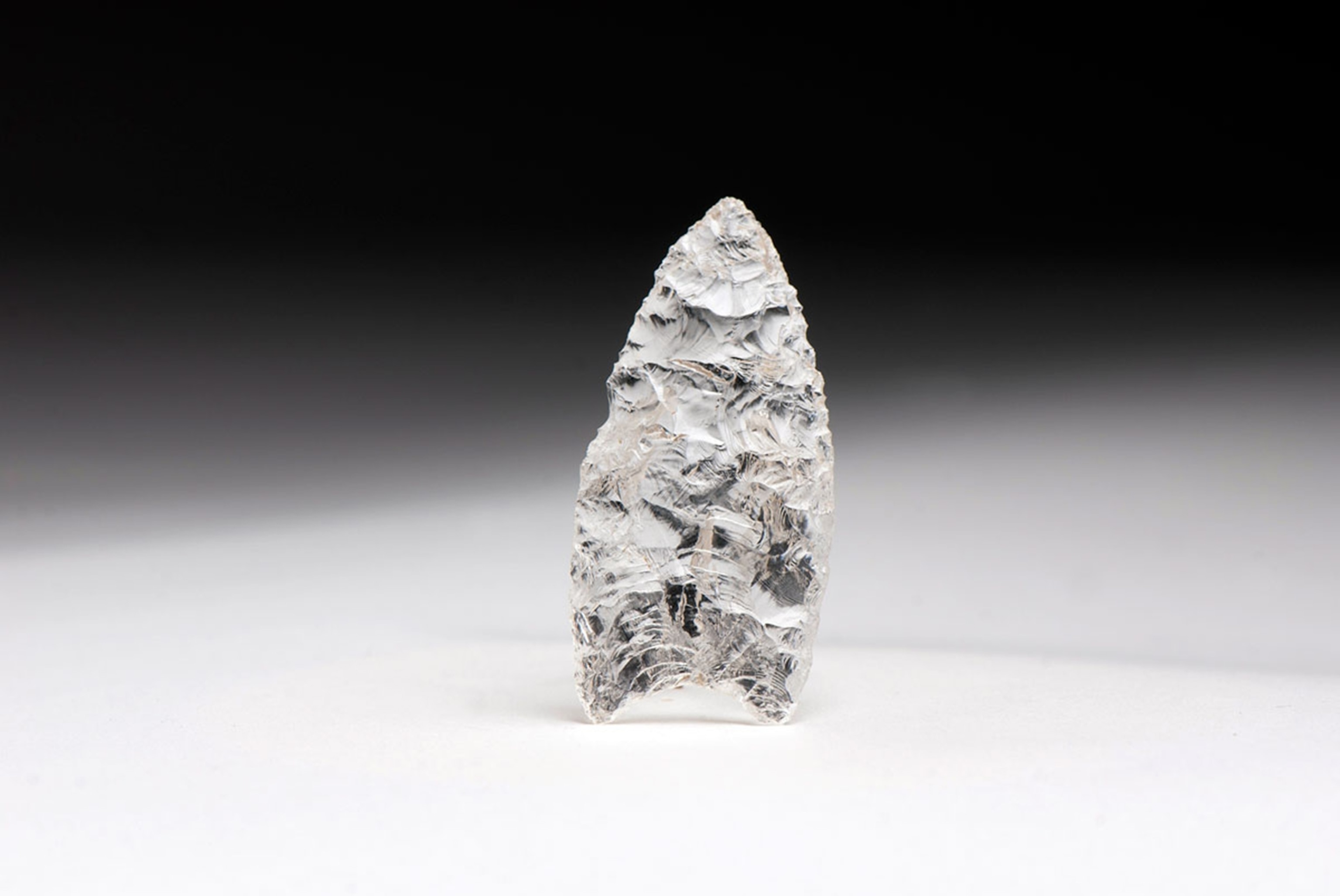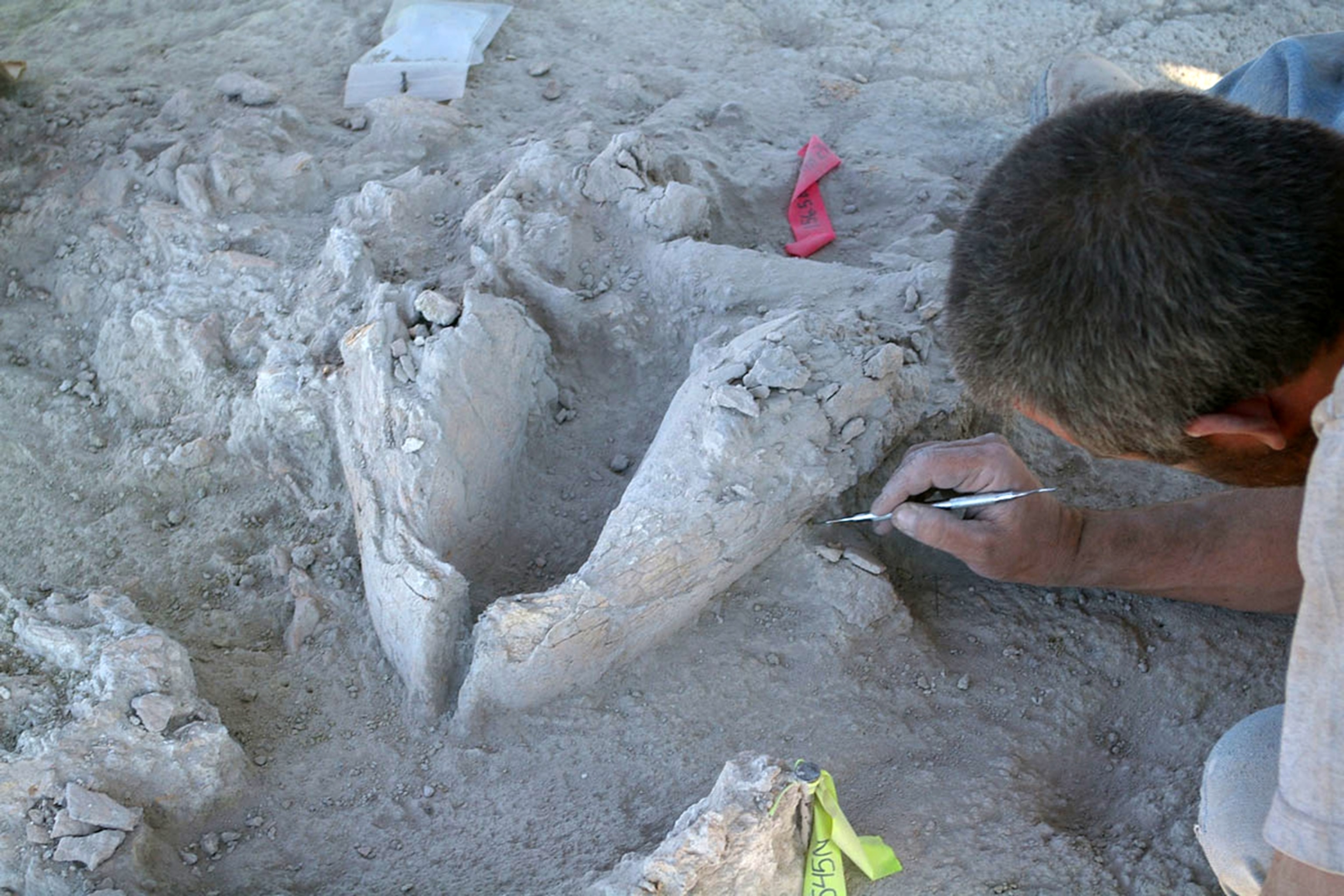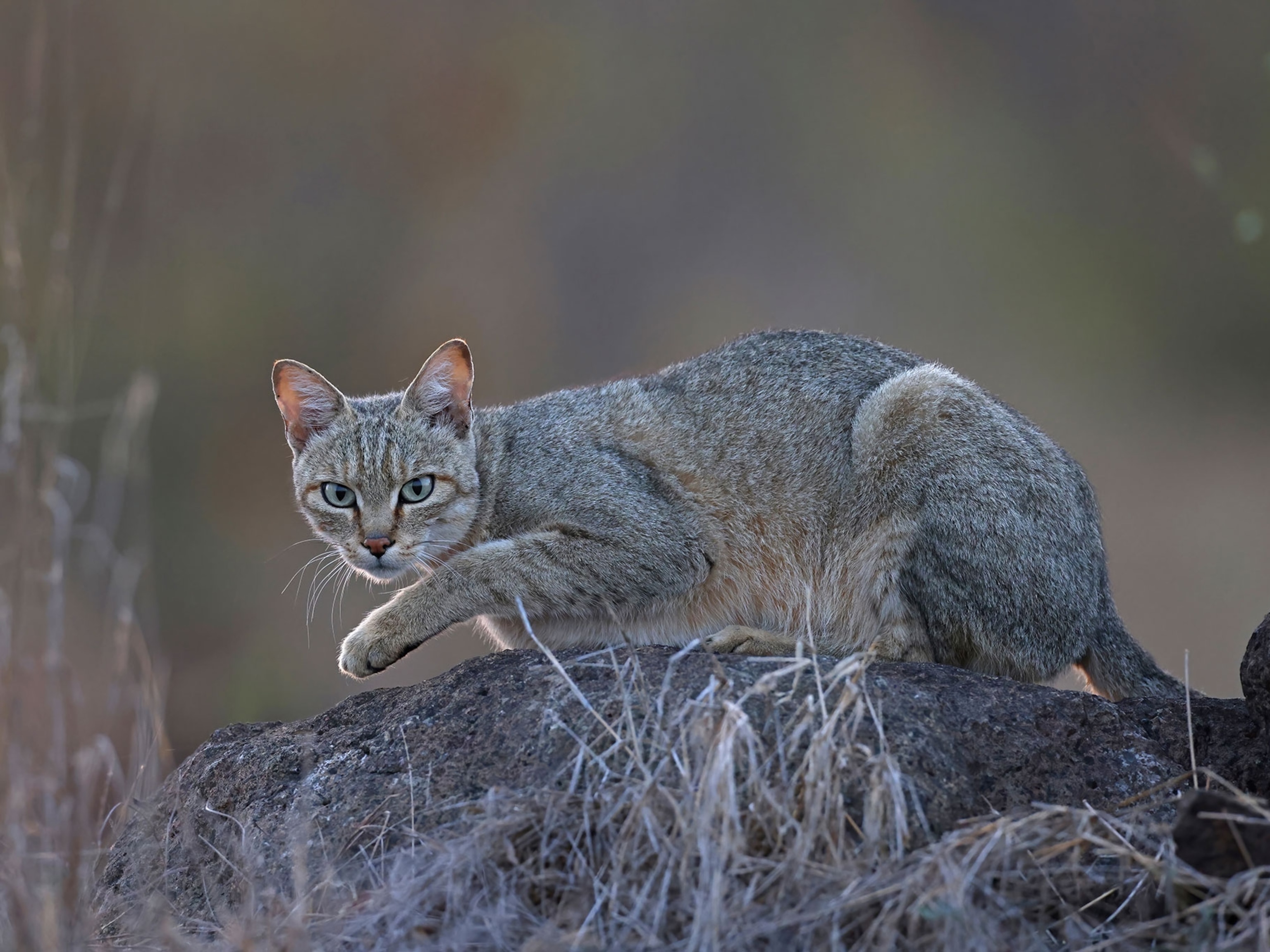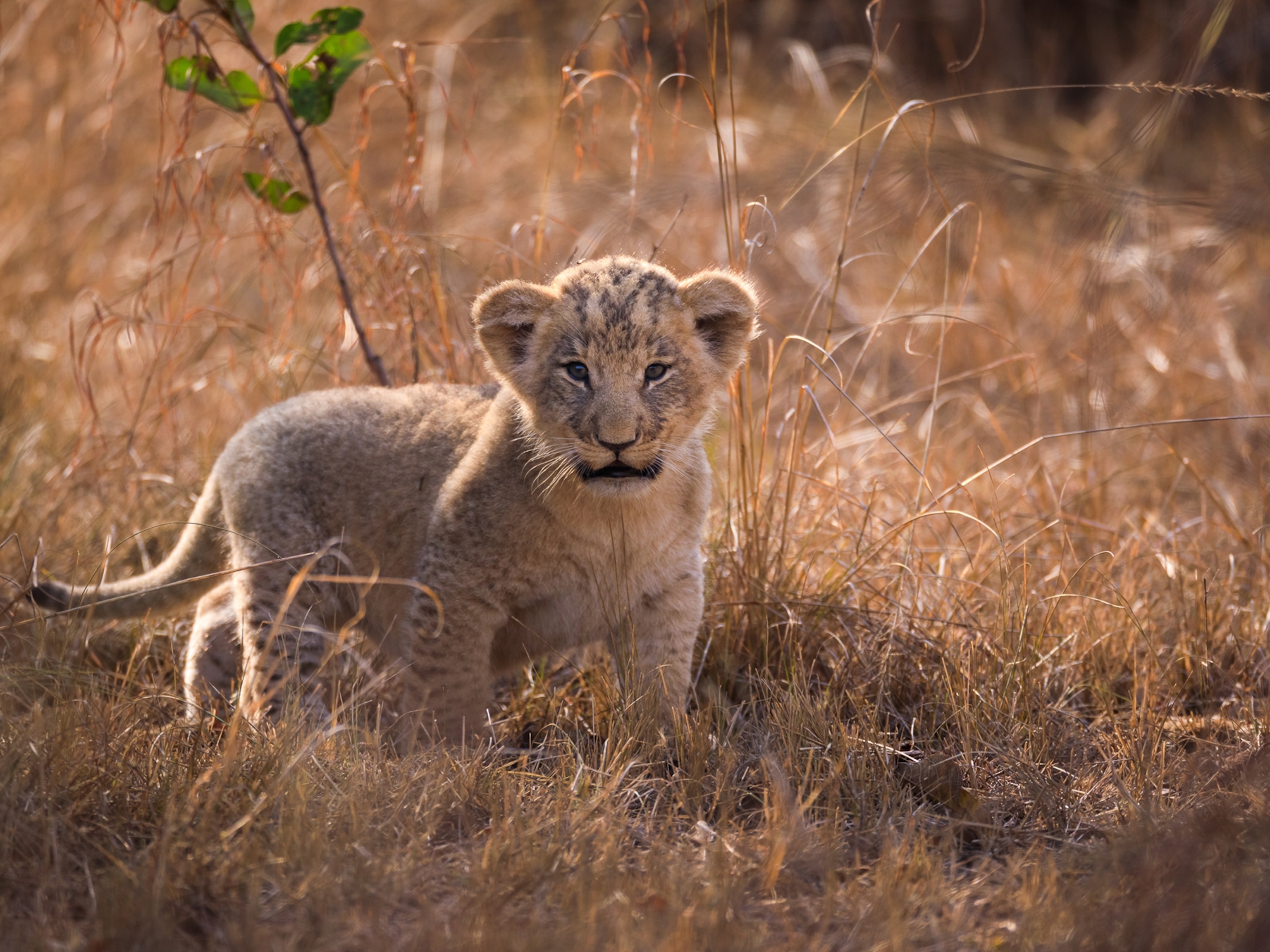
Ancient Native Americans Ate Pachyderms; Site Challenges Theory of Where New World Culture Began
Bones of the four-tusked gomphothere turned up at an ancient site.
At a Mexican site known as the End of the World, archaeologists have unearthed a Native American first: the bones of two extinct elephant-like animals that sported four tusks apiece, surrounded by 13,400-year-old spear points.
The discovery at the El Fin del Mundo site in northwestern Mexico's Sonora Desert provides the first archaeological evidence that the so-called Clovis people, who belonged to the earliest well-defined culture of the New World, preyed upon gomphotheres, ancient animals similar in size to modern-day elephants. (Related: "Speared Mastodon Bones Hint at Earliest Americans.")
It's not just the meal that has archaeologists intrigued; it's the age of the leftovers. El Fin del Mundo is one of the oldest and southernmost Clovis sites ever discovered, according to University of Arizona archaeologist Vance Holliday, a co-author of the study announcing the find, released Monday by the Proceedings of the National Academy of Sciences. Far from the famous Bering land bridge, the location has researchers questioning the origin of our early ancestors.
"I think sites like El Fin del Mundo really force us to rethink the process of the colonization of the Americas," says archaeologist Thomas Jennings of the University of West Georgia in Carrollton, who was not part of the discovery team.
For a long time, Clovis culture was believed to have originated in the North American Southwest, south of the glaciers and Bering land bridge area. But the discovery of older Clovis sites in Texas and at El Fin del Mundo, which yielded nearly identical radiocarbon dates (13,400 years old), has cast doubts on that theory.
"All of a sudden here we are with the two oldest Clovis sites in North America in the south," says Holliday, a National Geographic grantee. "It raises the possibility that maybe Clovis didn't originate [in the north]. If it didn't, then it obviously had to come from somewhere else, which means it could be even older."
Jennings noted the latest artifacts from the El Fin del Mundo site allow researchers to close in on answers to some unsolved mysteries surrounding Clovis culture. Of highest interest to archaeologists is the diffusion of Clovis technology throughout the continent, for example, distinctive spear points with a long, broad, two-bladed face. Whether the points spread across the New World by migrations of a distinct Clovis population, or as an idea passed to already existing populations of other early Native Americans, is an open question.
"Finding the oldest Clovis sites that far south really does suggest to me that Clovis probably originated somewhere in southern North America, and that has a lot of implications for the peopling of the Americas," says Jennings.

Ice Age Creatures
Following up on a tip from a rancher, archaeologists first surveyed El Fin del Mundo in 2007, expecting to find mammoth bones or maybe even a mastodon. But when they excavated the mandible of the animal, it became clear they were dealing with something quite different.
While the Clovis were known for hunting megafauna like mastodons, mammoths, and bison, Holliday admits researchers had not given much thought to the possibility of gomphotheres as Clovis prey.
"I think people just assumed there probably wasn't a link between Clovis and gomphotheres because gomphotheres were so rare in the paleontological record of North America," he says.
Gomphotheres were more common in Central and South America during the last ice age. The first Native Americans are thought to have crossed to the American continent from prehistoric Siberia to Alaska in that era. Eventually they made their way to Mexico, setting up their fateful meeting with the elephant-like creatures at El Fin del Mundo. (Related: "Oldest Burial Yields DNA Evidence of First Americans.")
The pachyderms primarily lived in the high grasslands of South America and went extinct around 10,000 years ago.
"One of the neat things about this site is that it's one of the oldest Clovis sites, but it's also the youngest gomphothere site in North America," says Holliday.
Guadalupe Sanchez, an archaeologist with the Instituto de Geología at the Universidad Nacional Autónoma de México and a co-author of the study, will return to the field this December to survey more than a dozen additional sites near El Fin del Mundo, in the hope of uncovering more about Native Americans' past.
Follow Gloria Dickie on Twitter.





